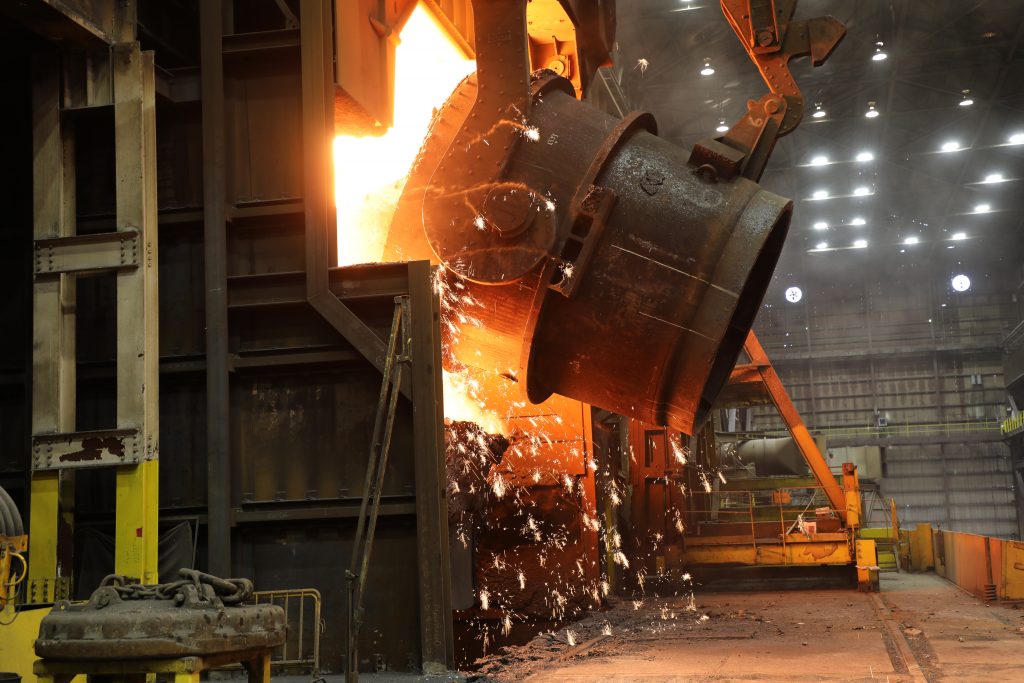
The Economic Policy Institute finds the 2018 action stopped the surge of steel imports (without impacting the cost of products like motor vehicles and household appliances). But the researchers also warn that removing Section 232 now would devastate America’s steel industry.
A thriving American steel industry is essential to securing President Biden’s vital, broadly supported policy goals.
Rebuilding our outdated and crumbling infrastructure with American steel. Providing ladders to the middle class for communities of color. Meeting or surpassing the U.S. commitments made under the Paris Agreement on climate. Creating a broad and deep supply chain for our transition to electric vehicles. And guaranteeing resilience and national security in a time of massive, unpredictable, and destabilizing disruptions.
President Biden also understands—and his administration has owned up to—mistakes made by past Democratic administrations on trade policy. These mistakes include Bill Clinton’s failure to respond to the Asian financial crisis and surges of steel imports that led to dozens of plant shutdowns and bankruptcies 20 years ago, instead leaving it to the Bush administration to act. And the Obama’s administration overreliance on dialogue and industry-led trade enforcement to counter massive steel overproduction by China and other nations over the past decade, when bolder moves were necessary.
In 2018, the Trump administration initiated “Section 232” trade enforcement in response to a surge of steel imports that had led to tens of thousands of layoffs and dozens of factory closures. No matter your views on President Trump – I certainly had many, many issues with him and his harmful rhetoric – something big had to be done.
And the Section 232 trade enforcement action has so far, in the words of Commerce Secretary Gina Raimondo, been “effective,” as a new report from the Economic Policy Institute finds.
After the Section 232 measures were put into place, America’s steel output, employment, capital investment and financial performance all improved, researchers Adam Hersh and Robert Scott find. U.S. steel companies announced plans to invest more than $15.7 billion in new or upgraded facilities, creating 3,200 new direct jobs. An additional $5.9 billion was invested by nine firms as part of industry restructuring, increasing efficiency and creating even more jobs.
These are good jobs. As Hersh and Scott note, the steel industry in 2017 supported nearly 2 million jobs that paid 27% more than the median earnings for men and 58% more than the median for women. And that was before Section 232 even went into effect.
But this recovery is fragile. For one, the initial 2018 action has already been eroded through generous product exclusions and country-level tariff exemptions put into place by the Trump administration.
The COVID-19 pandemic also has hit the steel industry hard. Should the Section 232 action be revoked now, Hersh warned in a media briefing call on Wednesday, America’s steel industry would be in an even worse position than before it was put into place.
That’s because the problem of global steel overcapacity remains, driven by massive government subsidies and other unfair trade practices that create an unequal playing field for American steelmakers and workers.
China, the world’s largest steel producer, “used subsidies and other forms of distortionary government support to expand steel capacity by 418% or 930 million metric tons (MMT) since 2000,” EPI reports. By 2019, China controlled “just shy of half of global steel capacity.” And China is investing in developing steel capacity in Europe, Asia, and Latin America to avoid more targeted trade enforcement actions (hence, why broad action is so important).
But China isn’t the only problem. Other countries also are using trade-distorting support to boost their steel capacity, including India, Turkey, Iran, South Korea, Vietnam, Russia, Brazil, Mexico and Taiwan.
This is a global problem that will require a coordinated global solution. Until that happens, however, the United States needs to maintain Section 232.
For one, our national security is at stake. Pete Trinidad, president of United Steelworkers Local 6787, said on the press call unveiling the report that his facility in Burns Harbor, Ind., makes steel for the military, including for battleships and submarines.
“We need to have some consistency. We need to be able to produce and maintain at a certain level,” Trinidad said. “God forbid we get caught in one of the downcycles and get caught in a war or something.”
“That’s a scary subject for us,” he added. “We talk about it all the time out here.”
Opponents of Section 232 often claim that the trade enforcement action has led to rising costs. But EPI found that “Section 232 measures have had no meaningful real-world impact on the prices of steel-consuming products.” There were “statistically zero or economically negligible causal effects on the prices of downstream steel-using goods,” EPI reports, including motor vehicles, construction equipment, electrical equipment and household appliances.
And the United States is still a net importer of steel products.
The Biden administration is currently undertaking a thorough and complete review of the 232s, and as this report shows, that review must conclude that the tariffs must be maintained. Meanwhile, supplemental actions to manage global overcapacity should be put into place to find a solution to this problem once and for all.
Dan Simmons, president of USW Local 1899 in Granite City, Ill., recalled Wednesday that the steel mill there idled in December 2015 because of the “glut of illegally dumped steel coming into the United States.”
It was two-and-a-half years before the facility was up-and-running at full capacity again, and that only happened because of the 232 action. But if the 232s were to be repealed, Simmons fears the mill will shut down once again.
“It’s very important that this 232 stays in place, helps us get our feet back on the ground, and allow the domestic steel industry to reinvest with some capital spending,” Simmons said. “We can compete with anybody, just give us a level playing field. That’s all we ask for.”
